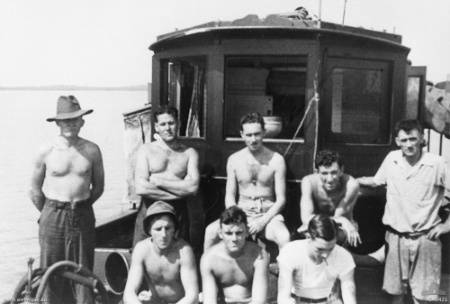
We all know that our soldiers have fought hard to protect us and our country. But what we didn’t realise was that deep within the Australian military was a secret unit that conducted more than 80 operations into enemy territory during World War II.
The unit called, the Z Special Unit, conducted missions in the Pacific and South East Asia, but their achievements were classified for decades.
And today, years after being hidden from public knowledge, they will be revealed and recognised at the Australian War Memorial.
Senior historian at the memorial Dr Karl James said members of the unit conducted some of the most courageous and extraordinary acts of the Second World War, reports ABC News.
“The members of Z Special Unit are amongst the bravest of the brave,” Dr James said.
“It is only given the passage of time say from the 1980s onwards, the wartime records relating to Z Special Unit have been cleared and opened, that we are now able to talk about some of these pretty remarkable exploits.”

Dr James said the unit was comprised of around 1,700 members who were sometimes deployed in two-man teams working alongside a wide range of other allied services.
“They worked much more closely with local people, like villagers and they were also given some language training,” he said.
There were also women members of the unit supporting missions from Australia as professional ciphers.
Jack Tredrea, 96, of Adelaide will unveil a plaque commemorating Z Special Unit at the War Memorial today, which he lobbied for alongside ANU anthropologist Christine Helliwell.
One of the few surviving members, Mr Tredrea was deployed with Z Special Unit as part of the stealth Operation Semut in Malaysian Borneo, which involved parachuting into the jungle with weapons and cyanide pills.
“We didn’t know whether the Japanese had arrived up in the highlands, we were jumping in blind,” he said.
“But luckily they hadn’t got into the highlands and we were welcomed that day by the villagers.
“Semut consisted of Semut 1, 2, 3, and 4, and each one had eight personnel … at the end of the war we [had made] over 2,900 kills and taken over 300 prisoners.”
Mr Tredrea and his comrades were sworn to secrecy for 30 years after the war.
He said the new Canberra plaque and the public recognition it brought meant a lot to him and other surviving veterans and families.
“For all these years no-one knew anything about Z which I think was a great pity because even the SAS today tell us that they are still working on what we started,” he said.
“I was always so proud of the work that Z Special did and when Dr Christine Helliwell approached me with this idea [for the plaque and service] I was absolutely chuffed.
“There are a lot of fellows looking down on us from upstairs with big smiles too.”
Around 1,000 people including veterans, widows, families and dignitaries are expected to attend the unveiling of the plaque at the Australian War Memorial, which Dr Helliwell worked to have installed with veterans and the ACT SAS Association.
Among them will be around 20 surviving veterans of the Z Special Unit and 10 families of veterans from New Zealand who also served with the unit, in what will be the first national commemoration of Z Special Unit.